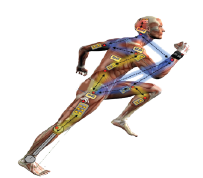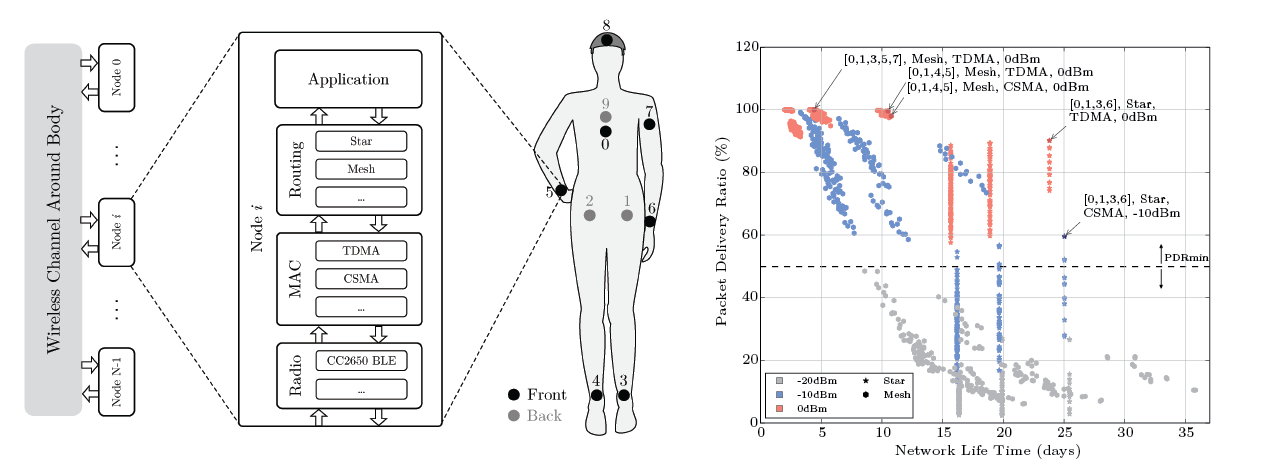Human Intranet Network
Efficient Robust Network of Wearable and Implantable Nodes around the Human Body
The Human Intranet is envisioned as an open, scalable platform that seamlessly integrates an ever-increasing number of sensor, actuation, computation, storage, communication, and energy nodes located on, in, or around the human body, acting in symbiosis with the functions provided by the body itself. The limited amount of available energy and the critical nature of its applications require such a network to be extremely efficient and robust. This project introduces a learning-based adaptive network structure to overcome these challenges [1].


As the number and variety of nodes, network protocols, and technologies available at each network layer continuously increase [2], the design of such an open, adaptive, and scalable network platform becomes a daunting task. Hence, we proposed an optimization-based design space exploration approach for a Human Intranet network across the entire communication stack, capable of exploring network lifetime versus reliability trade-offs [3].


This work was in collaboration with Prof. Alberto Sangiovanni-Vincentelli (UC Berkeley), Prof. Pierluigi Nuzzo (University of Southern California), Prof. Alvaro Araujo (Universidad Politecnica de Madrid) and Dr. Arno Thielens (UC Berkeley).